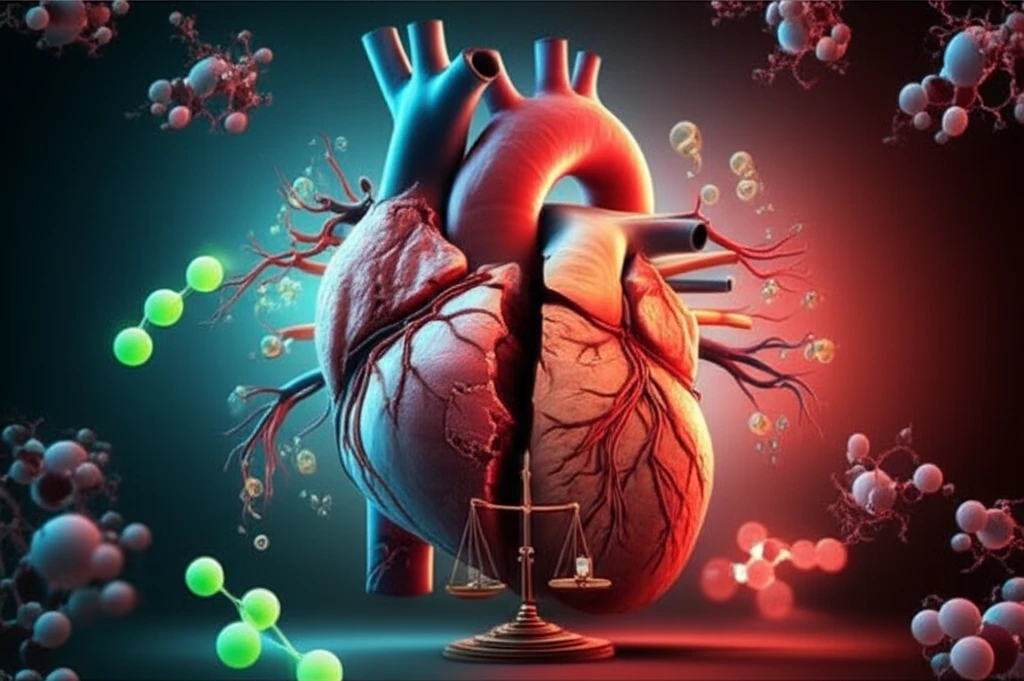
Heart's Double Agent: Can Nitric Oxide Help or Harm During a Heart Attack?
"The surprising dual role of inducible Nitric Oxide Synthase (iNOS) in myocardial ischemia-reperfusion injury and the future of heart disease therapies."
Heart disease, particularly myocardial ischemic heart disease, remains a leading cause of death worldwide. This condition arises when the heart muscle doesn't receive enough blood, leading to myocardial infarction and potentially progressing to other severe conditions like hypertension, atherosclerosis, and heart failure. Reperfusion, the process of restoring blood flow to the heart, is a critical treatment. However, reperfusion itself can paradoxically cause further damage, known as ischemia-reperfusion injury.
Nitric oxide (NO) is a molecule known for its diverse roles in the body, notably in regulating blood vessel dilation and cardiac function. However, its role in myocardial ischemia-reperfusion injury is complex and not fully understood. The enzyme inducible nitric oxide synthase (iNOS) produces NO, and its activity can have both beneficial and detrimental effects on the heart during and after an ischemic event.
This article delves into the dual nature of iNOS and NO in myocardial ischemia-reperfusion injury. By examining the current research, we aim to provide a clearer understanding of how iNOS-derived NO can either protect or harm the heart, potentially paving the way for more effective therapeutic strategies in managing ischemic heart diseases.
The Two Faces of Nitric Oxide: Friend and Foe in Heart Health

Nitric oxide synthases (NOSs) are a family of enzymes responsible for producing nitric oxide (NO) from L-arginine. Among the three key NOSs, inducible NOS (iNOS) expression is primarily triggered by inflammatory stimuli, leading to a substantial production of NO. This iNOS-derived NO plays a crucial role in various physiological and pathophysiological conditions, including heart disease.
- The Dark Side: Detrimental Effects of iNOS/NO: Under certain conditions, iNOS produces excessive NO, which, combined with reactive oxygen species (ROS), leads to the formation of harmful compounds like peroxynitrite. This can result in:
- Increased oxidative stress
- Cardiac dysfunction
- Inflammation
- Cellular damage
- Myocardial apoptosis
- The Bright Side: Beneficial Effects of iNOS/NO: Conversely, NO produced by iNOS can also protect the heart through mechanisms such as:
- Initiating and mediating ischemic preconditioning
- Reducing infarct size
- Improving myocardial contractility
- Enhancing antioxidant defenses
Future Directions: Harnessing NO's Power, Avoiding the Perils
The dual role of iNOS/NO in myocardial ischemia-reperfusion injury highlights the need for a nuanced understanding of its signaling pathways. Future research should focus on identifying the specific conditions and mechanisms that tip the balance between the protective and detrimental effects.
Potential therapeutic strategies could involve:
<ul><li>Developing selective iNOS inhibitors that prevent the overproduction of NO and subsequent formation of peroxynitrite.</li><li>Enhancing the antioxidant defense systems to counteract oxidative stress.</li><li>Targeting specific signaling pathways, such as HIF-1α or cGMP, to promote cardioprotection.</li><li>Personalized medicine approaches that consider individual risk factors and tailor treatments accordingly.</li></ul>
